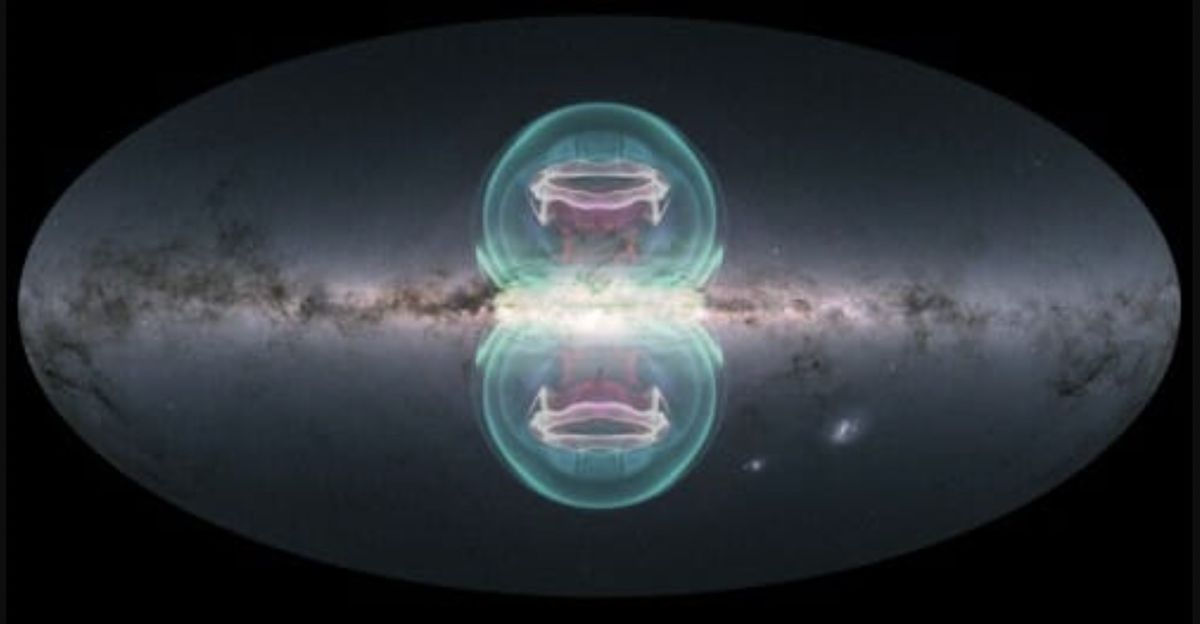Titanic cosmic bubbles blown by the Milky Way are surprisingly complex
By Robert Lea published about 19 hours ago
Astronomers have discovered new properties of the giant lobes of gas called eRosita bubbles that extend far out from the center of our galaxy.

Giant bubbles of hot gas blown outward from the Milky Way extend high and low above and below our galaxy. (Image credit: NASA/Karen Yang/Mateusz Ruszkowki/Ellen Zweibel)
The giant bubbles of hot gas blown out from the center of our Milky Way galaxy are far more complex than previously believed, a new study suggests.
The discovery could finally explain how these 36,000-light-year-tall structures, which extend from the Milky Way's disk, are formed, scientists said.
The new study examined the thermal and chemical properties of these features, called eRosita bubbles, revealing hitherto undiscovered properties in their shells.
These bubbles — named after the eRosita X-ray telescope that first sighted them — aren't the only set of bubbles extending from the disk of the Milky Way. They are joined by Fermi bubbles, which, despite possessing a similar shape, are half the size of eRosita bubbles and are also less energetic than their larger counterparts.
More:
https://www.space.com/milky-way-erosita-bubbles-surprisingly-complex
